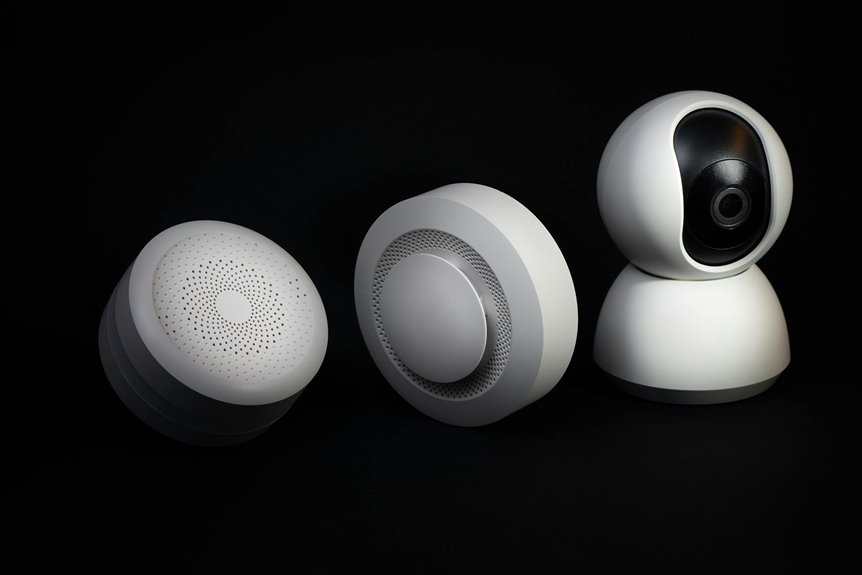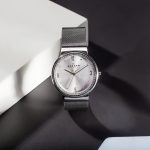The material of your mousepad significantly affects your mouse sensor's performance. Cloth mousepads offer control, while plastic ones provide a smoother glide for speedy movements. Glass mousepads are durable but can be less responsive. Each material influences the friction and surface texture, impacting your tracking accuracy and overall experience. Finding the right balance between comfort and functionality is crucial for optimal performance. You'll discover more about how these factors work together as you explore further.
Table of Contents
Key Takeaways
- Different mousepad materials, like cloth and plastic, influence glide speed and control, affecting overall sensor performance.
- Cloth mousepads provide better control and precision, ideal for tasks requiring accuracy, while plastic mousepads enable faster movements.
- Smooth mousepad surfaces minimize resistance, enhancing quick cursor movements, beneficial for gaming and fast-paced applications.
- Textured surfaces enhance tracking accuracy, allowing for more precise sensor responses during detailed tasks.
- The thickness of the mousepad can impact comfort and responsiveness, which indirectly affects sensor tracking performance.
Understanding Mouse Sensors and Their Functionality
Understanding mouse sensors and their functionality is crucial for optimizing your gaming or computing experience.
Mouse sensors come in two primary types: optical and laser. Optical sensors use LED lights to track movement, while laser sensors utilize laser technology for higher precision on various surfaces.
The sensitivity of these sensors is measured in DPI (dots per inch), affecting how quickly your cursor responds to your movements. Higher DPI settings allow for swift cursor movement, crucial in fast-paced gaming scenarios.
Additionally, sensor polling rate, measured in Hz, determines how often your mouse reports its position to your computer. A higher polling rate results in smoother tracking.
The Impact of Surface Texture on Tracking Accuracy
While choosing a mouse with the right sensor is vital, the surface texture of your mousepad also plays a significant role in tracking accuracy. The texture can affect how well your mouse tracks movement, impacting your overall performance.
Here's what you should consider:
- Smooth Surfaces: They provide minimal resistance, allowing for quick, fluid movements, ideal for fast-paced gaming.
- Textured Surfaces: These can enhance precision by offering more control, making them suitable for tasks requiring accuracy, like graphic design.
- Hybrid Surfaces: These combine both smooth and textured areas, giving you versatility for different tasks and preferences.
Choosing the right texture can improve your experience, so don't overlook this crucial factor when selecting a mousepad!
Comparing Cloth, Plastic, and Glass Mousepads
When it comes to mousepads, you've got three main materials to choose from: cloth, plastic, and glass, each with its own set of advantages and drawbacks.
Cloth pads offer a soft feel and excellent control, making them great for precision tasks. However, they can absorb moisture and wear out faster.
Plastic mousepads are typically smoother and provide quicker glide, ideal for fast-paced gaming. Yet, they can feel slippery and lack the comfort of cloth.
Glass mousepads bring a sleek look and durability, offering a consistent surface for tracking. They're easy to clean but can be cold to the touch and pricey.
Ultimately, your choice will depend on your personal preferences and the type of activities you engage in.
How Friction Influences Mouse Movement
Friction plays a crucial role in how smoothly your mouse moves across different surfaces. The right amount of friction can enhance your precision, while too much can hinder your performance.
Here are three ways friction influences your mouse movement:
- Speed: Low-friction surfaces allow for faster movements, ideal for quick actions in gaming.
- Control: High-friction surfaces provide more resistance, giving you better control for tasks requiring accuracy, like graphic design.
- Wear and Tear: Different materials wear down at different rates; a surface with excessive friction may degrade your mouse feet quicker.
Understanding these factors can help you choose the right mousepad and optimize your gaming or work experience.
Balancing friction levels is key to achieving the perfect glide for your mouse.
The Role of Thickness in Mousepad Performance
The thickness of your mousepad can significantly impact your overall performance, especially in gaming and precision tasks.
A thicker mousepad often provides better cushioning, reducing wrist strain during long sessions. This added comfort can help maintain focus and precision, allowing you to perform better under pressure.
However, if your mousepad is too thick, it might hinder quick movements and responsiveness, affecting your aim and overall gameplay.
On the other hand, a thinner mousepad can offer a more direct connection to the desk surface, enhancing precision for smaller movements.
Ultimately, finding the right thickness is essential for balancing comfort and performance, ensuring you get the most out of your gaming experience.
Choosing the Right Mousepad for Your Needs
How do you choose the right mousepad for your specific needs? First, consider your primary use, whether it's gaming, graphic design, or general office work. Each activity demands different features from your mousepad.
- Surface Texture: A smooth surface is ideal for fast-paced gaming, while a textured surface offers more control for design work.
- Size: Ensure it fits your desk space and allows for the range of motion you need. A larger pad can enhance your gaming experience.
- Material: Choose between cloth for comfort and control or hard surfaces for speed and precision.
Frequently Asked Questions
Can Mousepad Color Affect Sensor Performance?
Yes, mousepad color can affect sensor performance. Darker colors might absorb light better, while lighter colors can reflect it. You'll want to experiment with different colors to see which enhances your precision and tracking.
Do Mousepads With Designs Impact Tracking Accuracy?
Yes, mousepads with designs can impact tracking accuracy. Patterns might confuse sensors, causing erratic movements. When choosing a mousepad, opt for one with minimal distractions to ensure precise tracking during your gaming or work sessions.
How Often Should I Clean My Mousepad?
You should clean your mousepad every few weeks to maintain optimal performance. Regular cleaning removes dirt and oils, ensuring better tracking and smoother movements. If you notice buildup, don't hesitate to clean it sooner.
Does Humidity Affect Mousepad Performance?
Humidity can definitely affect your mousepad's performance. When it's too humid, the surface may become sticky or damp, impacting your mouse's glide and accuracy. Keeping your environment dry helps maintain optimal performance for your setup.
Can a Mousepad Improve My Gaming Skills?
Absolutely, a good mousepad can enhance your gaming skills. It provides a consistent surface, improves accuracy, and allows for smoother movements, helping you react faster and play more effectively in intense gaming situations.




